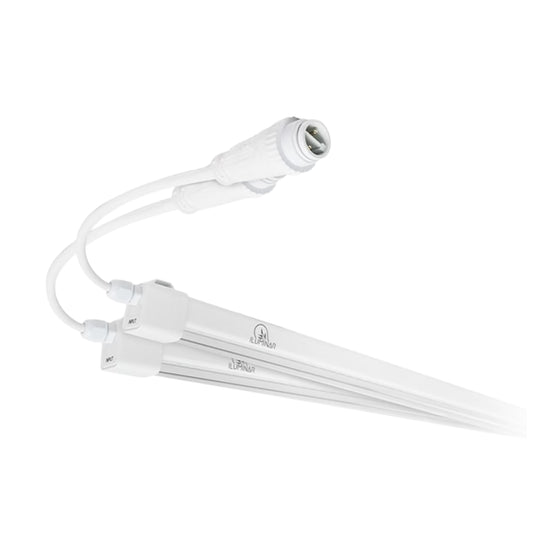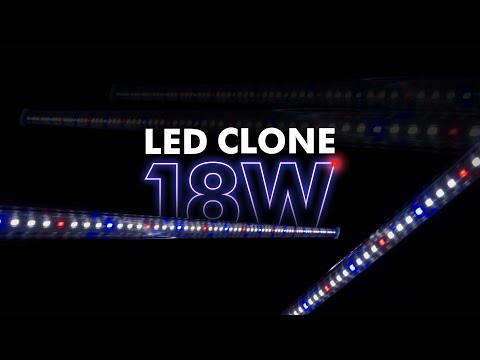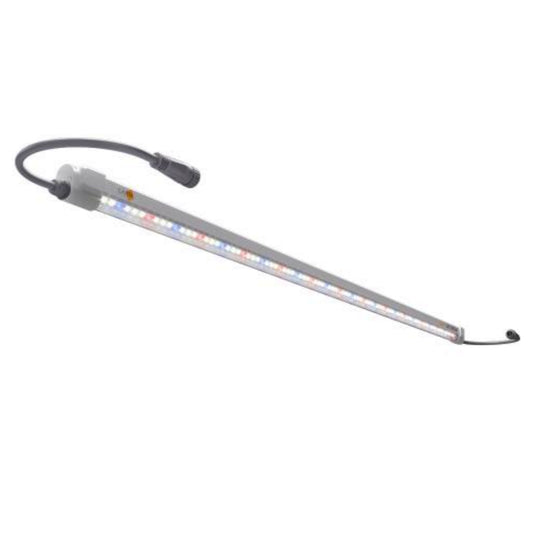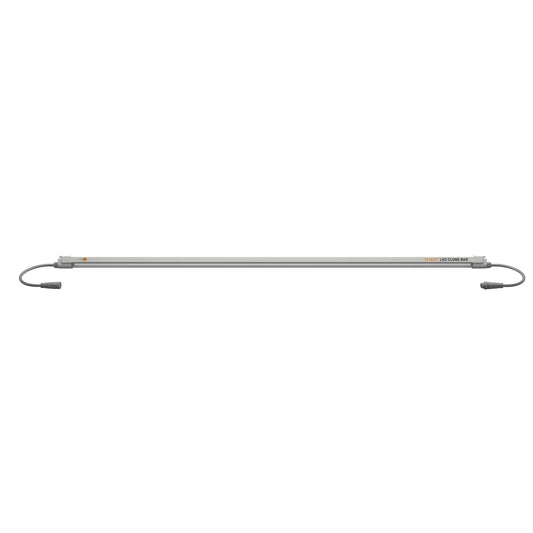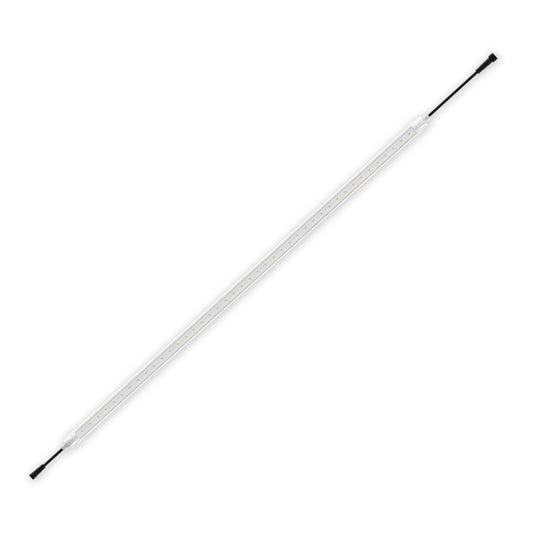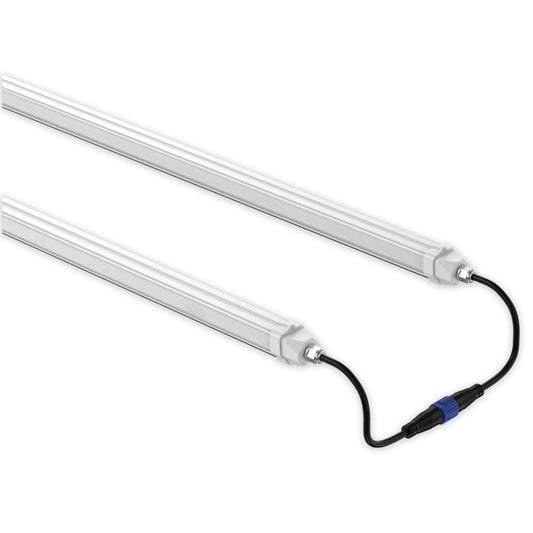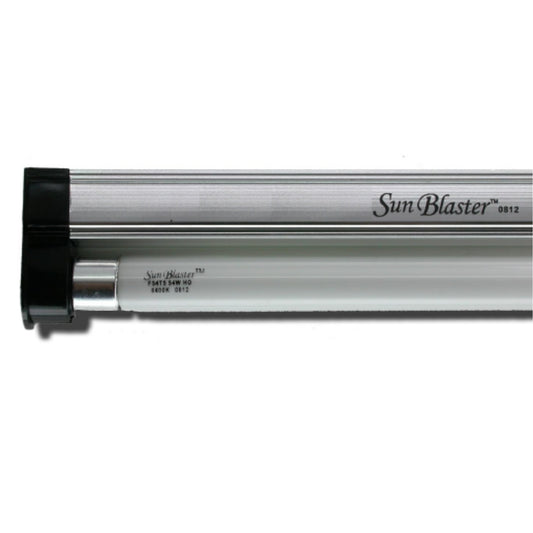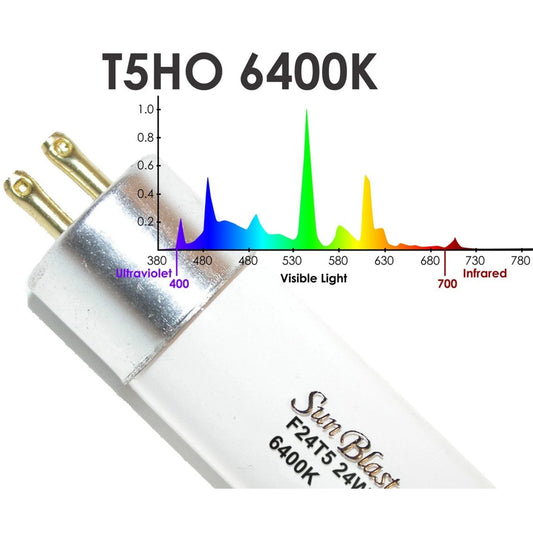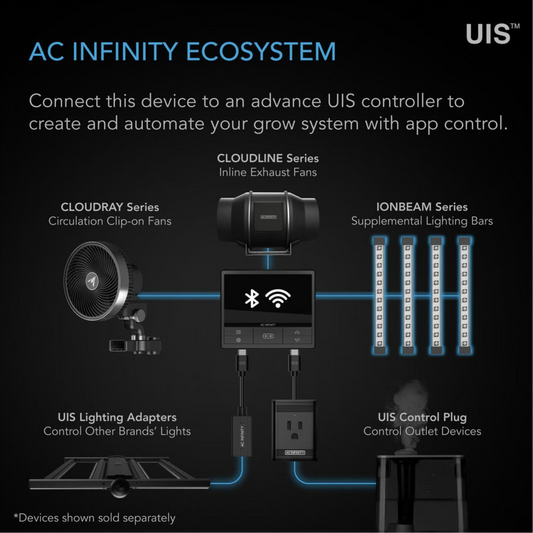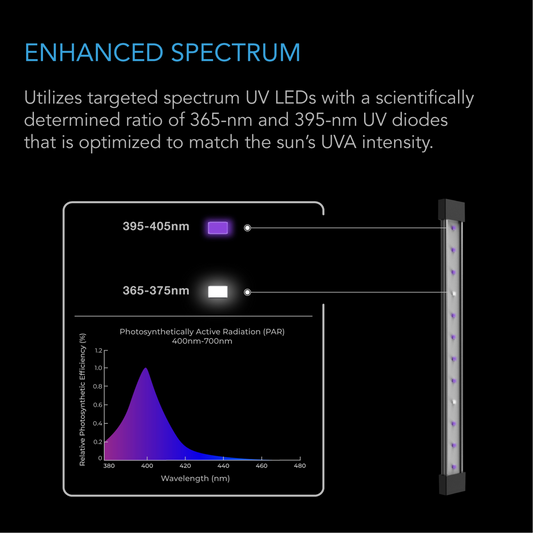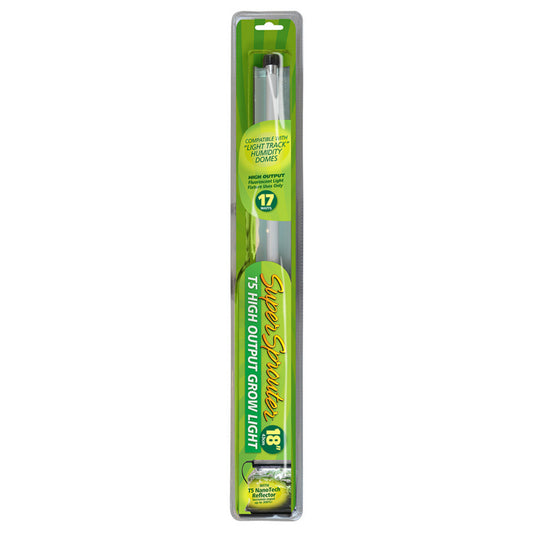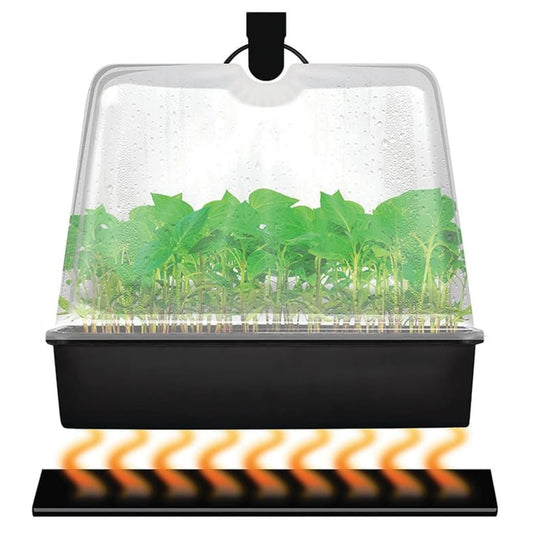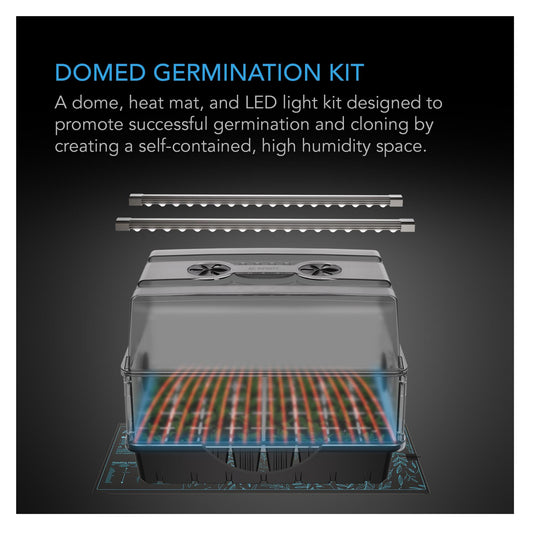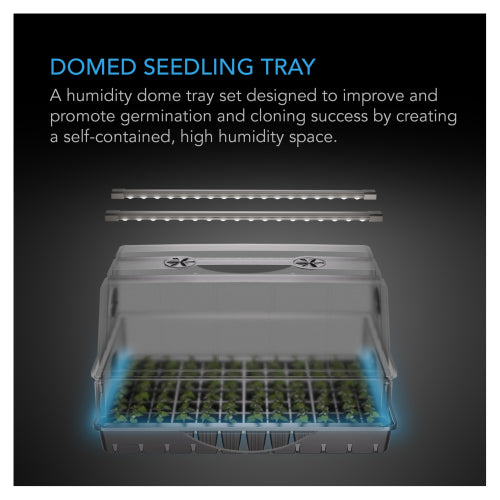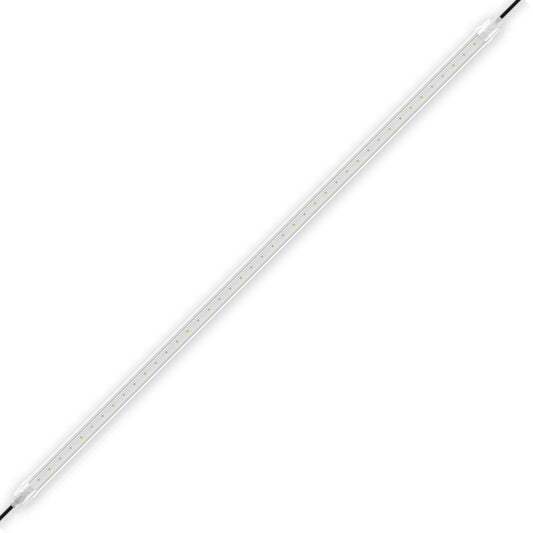Propagation Lighting
Power early plant development with full-spectrum, energy-efficient propagation lighting engineered for greenhouses, indoor farms, and home gardens. Our LED bars and low-watt fixtures deliver uniform PPFD over trays, domes, and nursery benches—boosting germination, building sturdy roots, and driving consistent, higher yields from day one.
-
Iluminar 18W Clone LED Twin-Pack 120-277V (Luxx Alternative)
Vendor:Iluminar LightingRegular price $59.00 USDRegular priceUnit price / per$59.00 USDSale price $59.00 USD -
GAVITA LED CLONE BAR 120-277V
Vendor:GavitaRegular price $67.47 USDRegular priceUnit price / per -
HLG Propagator lamp - 30W
Vendor:HLGRegular price $124.00 USDRegular priceUnit price / per$124.00 USDSale price $124.00 USD -
Sun Blaster T5 HO Fluorescent Strip Light -- 2 ft
Vendor:SunBlaster LightingRegular price $24.89 USDRegular priceUnit price / per -
Sun Blaster T5 HO Fluorescent Strip Light -- 3 ft
Vendor:SunBlaster LightingRegular price $32.45 USDRegular priceUnit price / per -
AC Infinity IONBEAM S11, Full Spectrum LED Grow Light Bars, Samsung LM301H, 11-Inch
Vendor:AC InfinityRegular price $89.99 USDRegular priceUnit price / per$89.99 USDSale price $89.99 USD -
AC Infinity IONBEAM U2, Targeted Spectrum UV LED Grow Light Bars, 2-Bar Kit, 11-Inch
Vendor:AC InfinityRegular price $64.99 USDRegular priceUnit price / per$64.99 USDSale price $64.99 USD -
Super Sprouter T5 HO 18 in Grow Light
Vendor:Super SprouterRegular price $47.15 USDRegular priceUnit price / per -
Super Sprouter Premium Germination & Propagation Kit w/ 7 in Dome & T5 Light
Vendor:Super SprouterRegular price $83.81 USDRegular priceUnit price / per -


AC Infinity Humidity Dome, Germination Kit with Seedling Mat and LED Grow Light Bars, 6x12 Cell Tray
Vendor:AC InfinityRegular price $119.00 USDRegular priceUnit price / per$119.00 USDSale price $119.00 USD -
AC Infinity Humidity Dome, Germination Kit with LED Grow Light Bars, 5x8 Cell Tray
Vendor:AC InfinityRegular price $69.99 USDRegular priceUnit price / per$69.99 USDSale price $69.99 USD -
AC Infinity Humidity Dome, Germination Kit with Seedling Mat and LED Grow Light Bars, 5x8 Cell Tray
Vendor:AC InfinityRegular price $83.99 USDRegular priceUnit price / per$83.99 USDSale price $83.99 USD -
AC Infinity Humidity Dome, Germination Kit with LED Grow Light Bars, 6x12 Cell Tray
Vendor:AC InfinityRegular price $99.00 USDRegular priceUnit price / per$99.00 USDSale price $99.00 USD -
Sun Blaster T5 HO Fluorescent Strip Light -- 4 ft
Vendor:SunBlaster LightingRegular price $38.86 USDRegular priceUnit price / per -
HLG Propagator 2.0 Hydroponic | Cloning Lamp
Vendor:Horticulture Lighting GroupRegular price $99.99 USDRegular priceUnit price / per
Propagation Lighting
Full-Spectrum Seedling & Cloning Lights for Strong Starts
Accelerate germination, root development, and early vegetative growth with Propagation Lighting. Purpose-built for greenhouses, indoor farms, and home grow rooms, these energy-efficient fixtures deliver balanced, full-spectrum output and gentle PPFD levels tailored to seedlings, clones, and starts. From LED bars and low-watt panels to classic T5 solutions, every light in this collection is vetted for uniform coverage, cool operation, and long service life—so your trays, domes, and nursery benches get consistent light that drives vigorous, compact growth and higher success rates....
Why Propagation Lights Matter
Young plants require moderate intensity, even distribution, and stable spectra to build dense root systems and sturdy morphology. Our propagation lights minimize heat stress, reduce stretching, and maintain ideal Daily Light Integral (DLI) in domes and racks—improving take rates for cuttings and delivering thicker stems and healthier transplants.
Key Benefits
• Optimized spectrum for early growth stages
• Uniform PPFD across trays and clone domes to reduce stretching
• Cool, energy-efficient operation that protects tender tissue
• Slim, linkable form factors for racks, shelves, and benches
• Proven reliability for commercial nurseries and hobby gardens alike
Best Uses
• Starting seeds and hard-to-germinate varieties
• Rooting cuttings under humidity domes or on heated mats
• Maintaining mother-plant clones prior to transplant
• Early vegetative development in tight spaces or multi-tier racks
Types of Propagation Lighting
• LED propagation bars & strips: ultra-efficient, low heat, excellent uniformity
• Low-watt LED panels: easy, all-in-one fixtures for trays and shelves
• T5/T5HO fixtures: proven, budget-friendly nursery standards
• Accessory dimmers & controllers: fine-tune PPFD for each stage
Popular Brands You’ll Find
Explore top propagation lighting brands carried by GrowersHouse. Use the links below to browse current availability:
- Sun Blaster
- Super Sprouter
- HLG (Horticulture Lighting Group)
- Gavita
- AC Infinity
- Iluminar
- Jump Start
- Sun Blaze
- Wachsen
Tip: Pair lights with heat mats, trays, and humidity domes to stabilize VPD and speed rooting.
How This Lights Helps Growers
Every product is selected to give you predictable starts: gentle intensity to prevent shock, spectra that encourage roots over stretch, and form factors that fit propagation domes and multi-tier racks. The result is fewer losses, tighter internodes, and transplants that establish faster after up-potting—saving time, space, and energy.

Frequently Asked Questions
Which light is best for propagation?
Look for full-spectrum LED bars or low-watt panels with uniform coverage and moderate PPFD (typically 100–300 µmol·m⁻²·s⁻¹ at canopy for seedlings/clones). T5/T5HO fixtures also work well thanks to their gentle intensity and spread.
Should cuttings be in light or dark?
Cuttings need gentle, consistent light—never complete darkness. Use low-to-moderate intensity with a humidity dome to reduce transpiration while photosynthesis supports rooting.
How much light to propagate cuttings?
Aim roughly for 100–200 µmol·m⁻²·s⁻¹ at canopy early on, increasing toward ~200–300 as roots form. Start dim and raise output or lower fixture height gradually as plants acclimate.
How do I recognize the best lights for propagation?
Prioritize even PPFD over raw wattage, low heat output, dimming or height adjustability, and proven spectra for early growth. Slim, linkable bars that cover full tray widths reduce hotspots and shadows.
How much light is too much for clones?
Excess intensity (>~300–400 µmol·m⁻²·s⁻¹ for fresh cuttings) can cause wilting and stress. If leaves taco or pale, dim the fixture, raise the light, or add a layer of diffuser until plants rebound.
Do LED lights count as sunlight for plants?
Quality LED grow lights provide photosynthetically active radiation similar to natural sunlight in the PAR range. For propagation, LEDs can be tuned to deliver the right spectrum and intensity without excess heat.
How much light do seedlings really need?
Many seedlings thrive around 200–300 µmol·m⁻²·s⁻¹ with 16–18 hours per day during early stages. Watch internode spacing and leaf color—compact growth and healthy green leaves indicate appropriate light.

